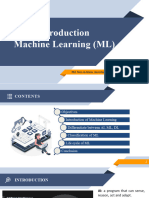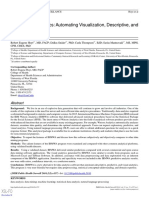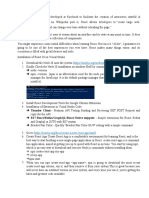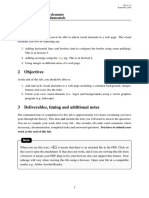0% found this document useful (0 votes)
43 views3 pagesIntroduction To Machine Learning
Machine Learning (ML) is a subset of artificial intelligence that allows computers to learn from data and make predictions. It includes three main types: supervised learning, unsupervised learning, and reinforcement learning, each with specific algorithms and applications. ML is widely used across various industries, including healthcare, finance, and e-commerce, and involves several steps from data collection to model deployment.
Uploaded by
Niaz TanhaCopyright
© © All Rights Reserved
We take content rights seriously. If you suspect this is your content, claim it here.
Available Formats
Download as PDF, TXT or read online on Scribd
0% found this document useful (0 votes)
43 views3 pagesIntroduction To Machine Learning
Machine Learning (ML) is a subset of artificial intelligence that allows computers to learn from data and make predictions. It includes three main types: supervised learning, unsupervised learning, and reinforcement learning, each with specific algorithms and applications. ML is widely used across various industries, including healthcare, finance, and e-commerce, and involves several steps from data collection to model deployment.
Uploaded by
Niaz TanhaCopyright
© © All Rights Reserved
We take content rights seriously. If you suspect this is your content, claim it here.
Available Formats
Download as PDF, TXT or read online on Scribd
/ 3























































































